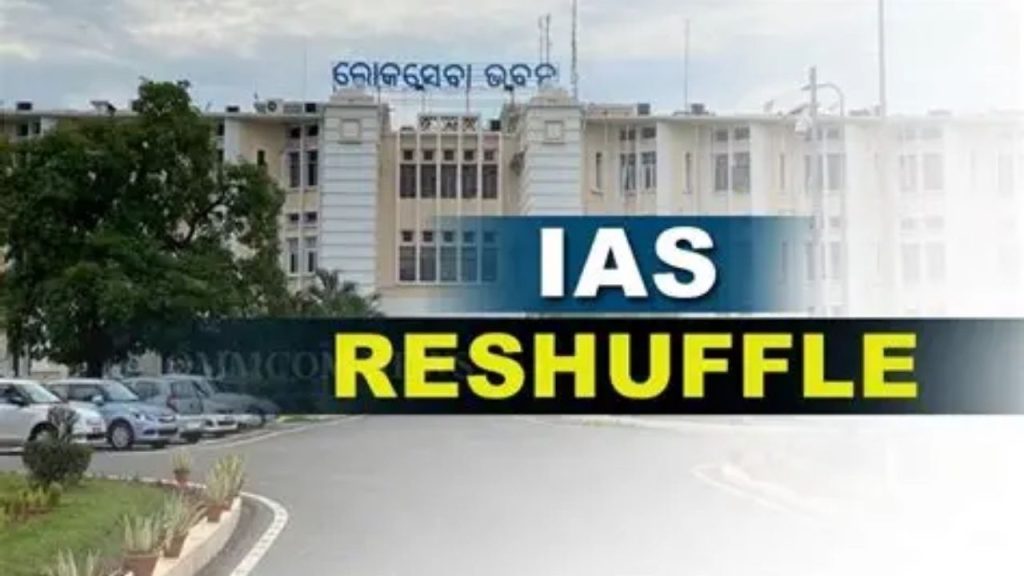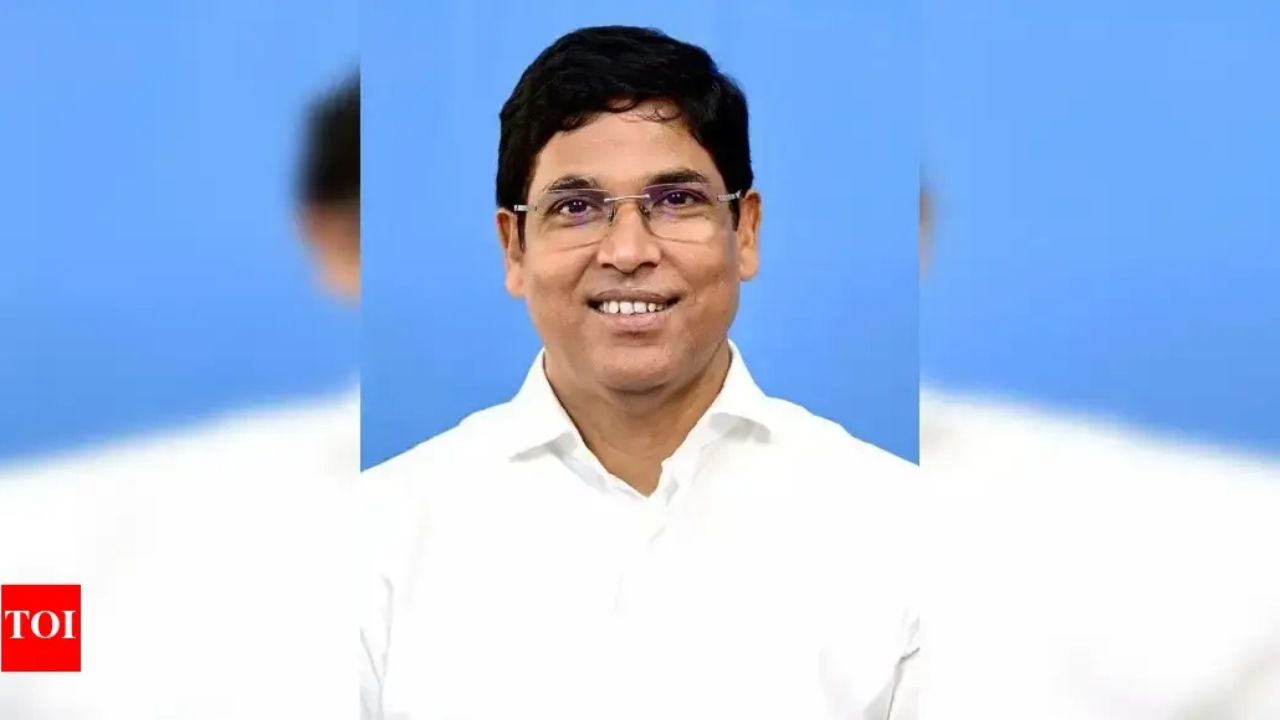On July 22, 2025, the government of Odisha kicked off a major administrative reshuffle, transferring 49 IAS (Indian Administrative Service) officers across various districts and departments. This reshuffle is a significant move by the state government, aiming to revamp its administration, improve governance, and foster more efficient leadership across the state. But what does this change mean for the affected districts and for the people who call them home? Let’s break down what’s really happening, why it matters, and what you can expect moving forward.
The Importance of IAS Officers in Governance
Before diving into the specifics of this reshuffle, it’s essential to understand the role of IAS officers in India’s bureaucracy. The IAS is one of the most prestigious services in the country, with officers entrusted with vital roles in shaping policy, implementing government programs, and maintaining the overall administration. Their decisions often affect everything from local education systems to large-scale infrastructure projects.
In the state of Odisha, the IAS officers play an especially critical role in managing day-to-day government operations, including district administration, welfare schemes, and economic development. These officers are directly responsible for ensuring that government policies reach the ground level, that the welfare of citizens is prioritized, and that state funds are allocated effectively.

So, when the Odisha government reshuffles its IAS cadre, the decision isn’t made lightly. This move is a strategic step aimed at improving the state’s administrative efficiency, bringing fresh leadership to different areas, and tackling local challenges more effectively.
Odisha’s 49 IAS Officers Transferred in Sweeping Reshuffle
| Key Information | Details |
|---|---|
| Number of Officers Transferred | 49 IAS officers across Odisha’s districts and departments |
| Districts Affected | 16 out of 30 districts, including major regions like Khurda, Puri, Jajpur, and Malkangiri |
| New Leadership Appointments | Includes Chanchal Rana (Bhubaneswar Municipal Corporation), Roopa Roshan Sahoo (Secretary to Governor) |
| Additional Appointments | Hemant Sharma (Industries & Public Relations) and Sanjeeb Kumar Mishra (Principal Secretary, Finance) |
| Strategic Objectives | Improve governance, inject dynamic leadership, and streamline administration to meet evolving challenges |
For more in-depth details on the reshuffling process and to track real-time updates, you can visit the official Odisha Government Website.
The 49 IAS officer transfers in Odisha represent a bold and strategic move by the government to foster efficient governance, infrastructure growth, and social welfare improvements across the state. While change can be challenging, the fresh leadership brought about by these transfers will undoubtedly have a significant impact on local communities. It’s all about getting the right people in the right positions to tackle the unique needs of each district, ensuring a future that’s brighter and more prosperous for everyone.
Why Is This Reshuffle So Important?
1. Bringing Fresh Leadership to Key Districts
The districts in Odisha that have received new leadership are varied in terms of size, demographic, and developmental challenges. For instance, Khurda and Puri, which are urban centers, face the need for advanced infrastructure and social welfare programs. These areas need leaders who can quickly adapt to urban planning and public service management. On the other hand, districts like Malkangiri and Rayagada are more rural and often face challenges related to poverty, access to healthcare, and educational inequalities.
2. Strategic Appointment of Senior Officers
One of the key components of this reshuffle is the appointment of senior officers to oversee critical departments. For example, Chanchal Rana has been moved to head the Bhubaneswar Municipal Corporation, where urban planning and infrastructure development will be her main focus. Similarly, Hemant Sharma, already a senior officer in Odisha, has now been given additional responsibilities to oversee the Information & Public Relations Department, in addition to his role as the Additional Chief Secretary for the Industries Department.
These appointments indicate the government’s intention to tackle both industrial development and public communication with a fresh perspective. Leaders with proven track records are being placed in critical areas to ensure that efficiency and innovation are at the forefront of administration.
3. Streamlining Operations and Enhancing Governance
In any state or country, bureaucratic inertia is often one of the biggest roadblocks to growth and progress. This reshuffle is designed to break that inertia by ensuring that officers are responsive, proactive, and dynamic in their approach to governance. The goal is to have officers who understand the evolving needs of the people and are capable of executing policies that suit the current times.
For example, with Sanjeeb Kumar Mishra taking over the Finance Department with additional responsibilities as Chairman of IDCO, there is now a renewed focus on ensuring financial stability and economic growth in the state. Excise Department reforms, under Bhaskar Jyoti Sarma, are expected to tackle both revenue generation and social issues related to substance abuse.
What Does This Mean for the People of Odisha?
1. Potential for Faster Development
With fresh leadership comes the potential for quicker decision-making and implementation of long-pending reforms. For example, officers like Chanchal Rana and Roopa Roshan Sahoo have previously shown their mettle in implementing reforms in different areas. Their experience and fresh eyes will likely lead to accelerated growth in both urban and rural sectors.
2. Increased Public Trust in the System
By introducing new leaders, the government of Odisha can also rebuild trust among citizens who might have felt disconnected from the administration. The transfer of such a large number of officers is also a sign that the government is committed to ensuring accountability and maintaining transparency in the functioning of local governments.
3. Better Solutions for Local Issues
Every district in Odisha has its own set of problems, ranging from unemployment and infrastructure gaps to environmental concerns. The reshuffle places new officers in districts where their skills and experiences are most needed. Officers who have worked in urban and rural settings alike can bring innovative solutions to the table. For instance, the issues in Malkangiri may require creative approaches to education and healthcare, while Khurda may focus on smart city initiatives and technological innovations to ease urban living.
How the Reshuffle Works
If you’re wondering how such a massive reshuffle is executed, here’s a quick guide:
Step 1: Evaluation of Administrative Needs
The state government first evaluates the performance of officers, the challenges faced by each district, and the developmental priorities of the state. This allows them to decide which officers are best suited to handle specific challenges.
Step 2: Decision-Making and Announcements
Once the evaluation is complete, the government issues official orders transferring officers to different posts. This process typically takes several weeks to finalize, but once announced, officers are expected to take charge immediately.
Step 3: Execution and On-the-Ground Impact
After the reshuffling process is completed, officers begin their work in the new districts. This often involves meeting local leaders, understanding community needs, and assessing the implementation of various government schemes.
ODISHA TEX 2025 Aims to Position Odisha as a Leading Textile Hub by 2030
MRO Facility in Bhubaneswar: A Leap for Odisha’s Aviation Growth
Odisha DFO Under Scrutiny After Rs 50 Lakh Deposits Detected in Accounts
FAQs
Q1: How does the reshuffling of IAS officers affect local governance?
The reshuffling introduces new leadership, which can bring fresh ideas, strategies, and a greater focus on addressing local issues. It may improve efficiency in administration and accelerate developmental projects.
Q2: Why are only 16 out of 30 districts affected?
The focus of the reshuffle was on areas that need immediate attention, where leadership could make a significant difference. These districts were chosen based on their current administrative challenges and developmental needs.
Q3: Can this reshuffle impact long-term policy change in Odisha?
Yes, this reshuffle is likely to set the tone for future policy shifts as new officers bring fresh perspectives. Their ability to engage with local communities and address systemic issues can lay the groundwork for sustainable development.
Q4: Will this reshuffle improve the economic growth of Odisha?
Yes, with experienced leaders like Sanjeeb Kumar Mishra overseeing the Finance Department and IDCO, the reshuffle is expected to boost economic development through better resource management and strategic investments.





